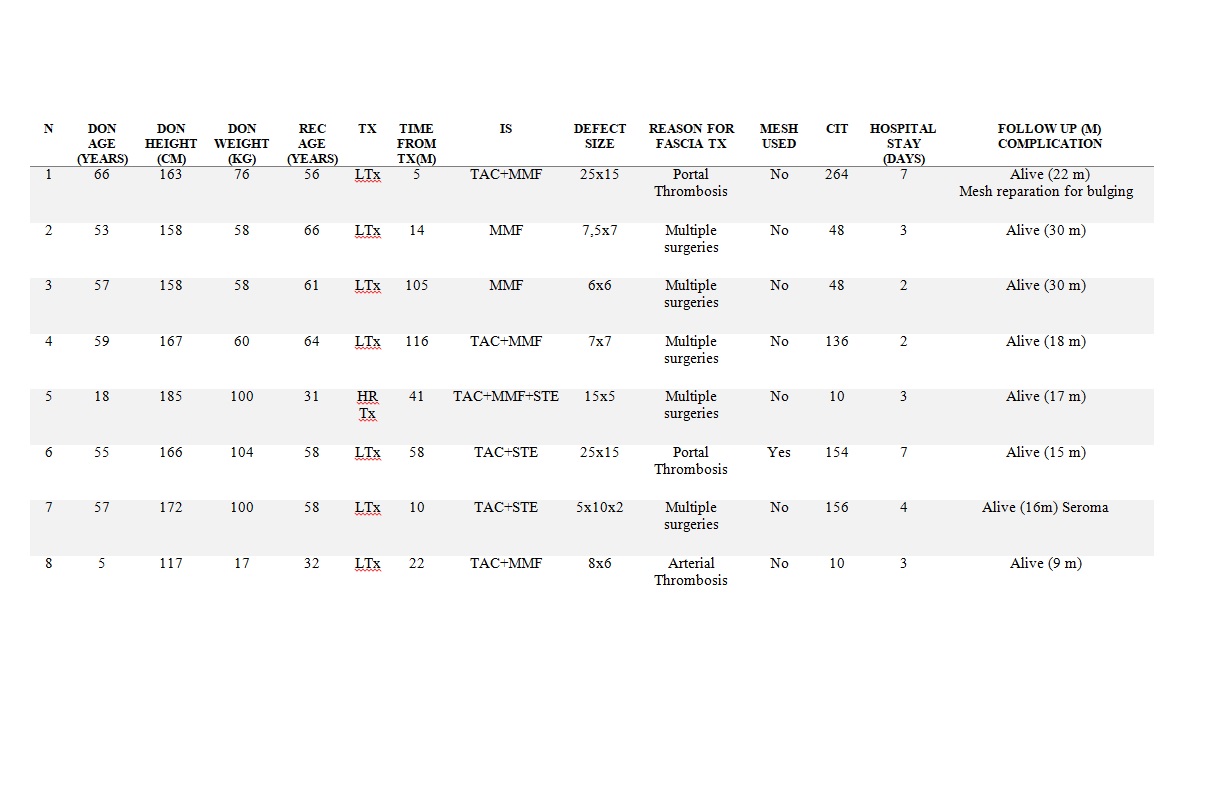Hernia correction after liver transplantation using non-vascularized fascia
Blanca Otero Torrón1, Iago Justo Alonso1, Alba Gómez Barrena1, Oscar Caso Maestro1, Sofía Lorenzo Mañas1, Yolanda Rodriguez- Gil1, Paola Peralta Fernandez-Revuelta1, Alberto Marcacuzco Quinto1, Luis Carlos Jimenez Romero1, Carmelo Loinaz Segurola1.
1Cirugía General, Hospital 12 de Octubre, Madrid, Spain
Background: Liver transplantation is an increasingly frequent surgical procedure with elevated rates of postoperative incisional hernias ranging from 5-46%. There are numerous known risk factors for incisional hernia, including the type of incision, patient sex, presence of comorbidities such as diabetes, ascites, older age, use of steroids, amongst others. Most of the studies involving treatment of incisional hernias in patients after liver transplantation show consistently high rates of complications.
Methods: We present a study of the use of non vascularized fascia for the symptomatic treatment of incisional hernias in patients with concomitant liver transplantation. We performed our new technique on 8 patients between January 2019 and January 2023.
Results: We have treated 7 liver transplant recipients, and one combined liver-kidney transplant. The median donor age was 57 years (5-66), while the recipient mean age was 58 (31-66). The median patient height was 163 cm (117-185) and median weight was 76 kg (17-104). Immunosuppression was not changed in fascia recipients. The median time between transplantation and hernia repair surgery was 41 months (5-116). The size of the aponeurotic defect varied from 6x6 cm to 25 x 20 cm. Two of our patients had complications. The first patient suffered from bulging, and finally required reintervention. The second complication was a surgical site seroma. There was no mortality related with the use of the technique, and none reported during follow-up.
Conclusion: Transplant of non-vascularized fascia has promising results for the treatment of incisional hernias in patients who have previously received a liver transplant.

[1] Abdominal wall closure
[2] Abdominal Hypertension
[3] Non-vascularized fascia
[4] Hernia repair
